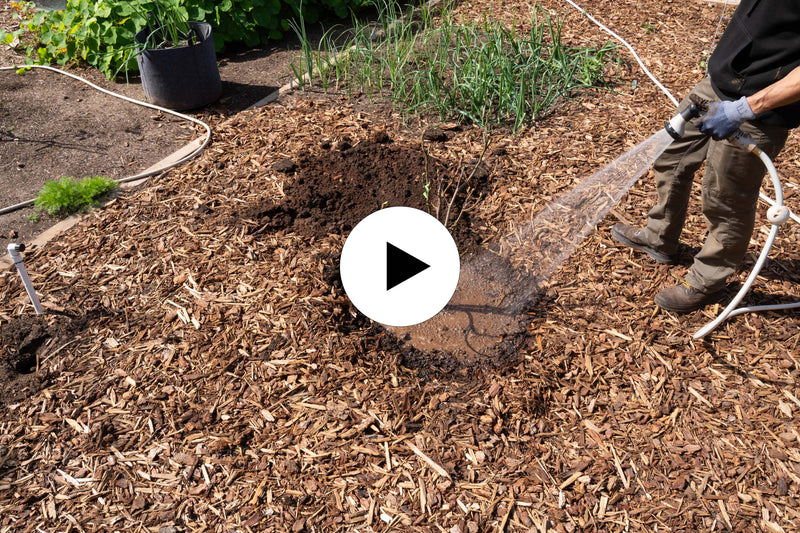


Black Mission Fig
View More Planting Info
Sunny locations will deliver the highest yield, but they can handle partial shade too. Aim for a position with around 6 hours of direct sunlight per day. Amend the soil with organic matter before planting to create a planting site that is rich and well-draining. Dig a hole twice as wide and the same depth as the root ball. Place the tree in the hole, ensuring it's straight, and backfill with soil, tamping down gently to remove air pockets. Water thoroughly to settle the soil around the roots. Apply a layer of mulch around 3-4 inches thick around the base of the tree after planting to keep weeds down and regulate soil temperature. For those in cooler climates, plant in containers to move the pot to a protected area over winter.
Sunlight:
Plant in full sun, providing at least 6 to 8 hours of direct sunlight per day. They can grow in partial shade, but yield will be reduced.
Fertilizing:
Feed annually in spring and summer with a balanced, slow-release fertilizer according to packaging instructions.
Watering:
Water regularly soon after planting to help the roots establish. Once established, these trees are considered drought-tolerant.
- Product Info
- Care and Maintenance
- Planting Care
- Growing Zone
Product Info
Mature Height: 10-30 ft.
Mature Width: 10-20 ft.
Sunlight: Full-Part Sun
Growth Rate: Moderate
Does Not Ship To: AZ, OR
Care and Maintenance
Watering: These trees are drought-tolerant once established, requiring little additional watering throughout the season. Water around once per week after planting to establish a strong root system. Water more often when planted in containers to combat quickly drying soil.
Fertilizing: Fertilize in early spring and again in summer with a balanced slow-release fertilizer. Apply around the drip line of the tree to ensure the nutrients reach the roots.
Pruning: Moderate pruning is beneficial in the early stages of growth to shape the tree and improve branching. Prune in late winter while the tree is dormant, removing dead or crossing branches and dense areas to allow sunlight to reach the center. Once mature, these trees don’t require much pruning.
Pests and Diseases: Nematodes, scale, mites, and beetles are common fig tree pests to keep an eye out for. They are also susceptible to anthracnose, rust, fig mosaic virus, and blight.
Pollination: Black Mission Fig Trees are self-fertile, so you don’t need to plant another fig tree for a successful harvest. Purchase the Fig Pollination Pack which includes the Chicago Hardy Fig and Black Mission Fig.
Harvesting: Harvest only when the fruits are ripe, as they will not continue to ripen off the tree. Remove them carefully when the skin changes color and taste test.
Recovery Time: Transitioning from our nursery to your home can be a bit of a shock to your plant. A short acclimation period helps it recover and reduces stress.
Climate Adjustment: Every environment is unique. Giving your plant time to adjust to the local climate, humidity, and light conditions in a shady spot will set it up for better growth and health.
How to Acclimate Your Plant: Keep the plant in its container and place it in a shady, sheltered area away from high winds. Ensure it's watered adequately – the soil should be moist but not waterlogged. Monitor the plant for any signs of distress and allow it to adjust for a few days before planting. After a few days of acclimation, your plant will be better prepared to thrive in its new home for years to come.
Planting Care
Sunlight: Plant in full sun, providing at least 6 to 8 hours of direct sunlight per day. They can grow in partial shade, but yield will be reduced.
Watering: Water regularly soon after planting to help the roots establish. Once established, these trees are considered drought-tolerant.
Fertilizer: Feed annually in spring and summer with a balanced, slow-release fertilizer according to packaging instructions.
Growing Zone
Growing Zone 7-10

Fruit Trees & Bushes Delivered to Your Doorstep
Unpack, Plant and Grow!





